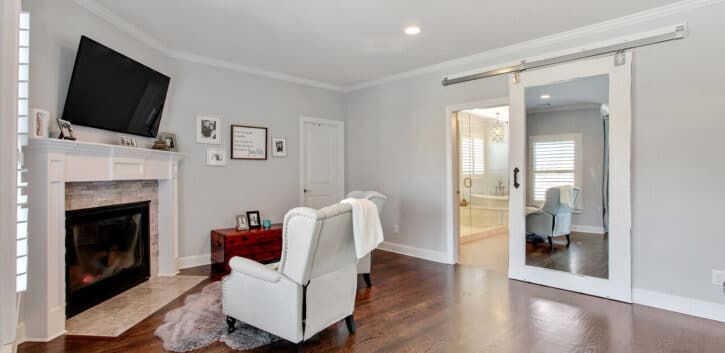May is Home Renovation Month!
It’s a great time to think about changes you may want to make to your Atlanta home and how you might pay for it! Common ways of paying for a home renovation or remodel include credit cards or personal loans. With the recent rise in home values, have you thought about using your home equity to cover the costs of renovations instead?
Options to pay for your Home Renovation
Mortgage rates, including those for home equity loans, are typically lower than rates for consumer credit, so borrowing against your equity could save you money in the long run. Plus, some home equity loans can be tax deductible, amplifying your savings even more (always consult a tax advisor before relying on tax savings).
There are three ways to tap into your home’s equity to pay for home renovations: cash-out refinance, home equity loan (HELoan) or home equity line of credit (HELOC).
With a cash-out refinance, you’ll change your existing primary mortgage to a new mortgage for the amount of money you currently owe on your home plus cash you receive. The amount of cash available will depend on the value of your home, which will be based on a new appraisal. The total amount you borrow can typically be no more than 80% of your home’s appraised value.
You can borrow similar amounts through a HELoan or a HELOC, but instead of one mortgage and one payment, you’ll set up separate loans. These loans typically carry a higher interest rate than a primary mortgage, and they are often based on the prime rate. That means they may adjust (often higher) over the life of the loan.
Here are some questions to ask before you borrow against equity to finance a home renovation:
How much debt do you already have?
If you already have other debt, especially debt that carries a high interest rate, you need to evaluate whether you can take on any more. If this will be tough, you might consider using your home’s equity to refinance your consumer debt to a lower rate, then using the additional cash from equity or your monthly consumer debt savings to pay for the renovation.
How much equity do you have in your home?
As mentioned above, you’ll need to have at least 20% equity in your home with the total amount borrowed. Otherwise, you would have to get private mortgage insurance, which would add even more to the cost of your renovation. Plus, you’ll want to make sure you have a strong equity position in the unlikely scenario home values drop.
How much are you borrowing for your home renovation?
As with a mortgage, a refinance, a home equity loan or line of credit will come with costs. If you’re not don’t need much for your renovation, it may not be worth the initial expense of borrowing against equity. You’ll want to make sure that the savings are worth the costs.
How long do you plan to stay in your home?
If you’re making renovations in order to sell your home, estimate the proceeds you can make on the sale after the total costs of the renovation are considered. Are the renovations likely to add enough value to the home to cover not only the price of the materials and labor but also the cost of borrowing the money?
The best place to start when you’re considering getting a loan against your home is a mortgage advisor. They typically offer no-cost consultations to help you understand your options.
For more information, visit applying for loans when you decide to remodel.
Looking for more remodeling news? Click here!
